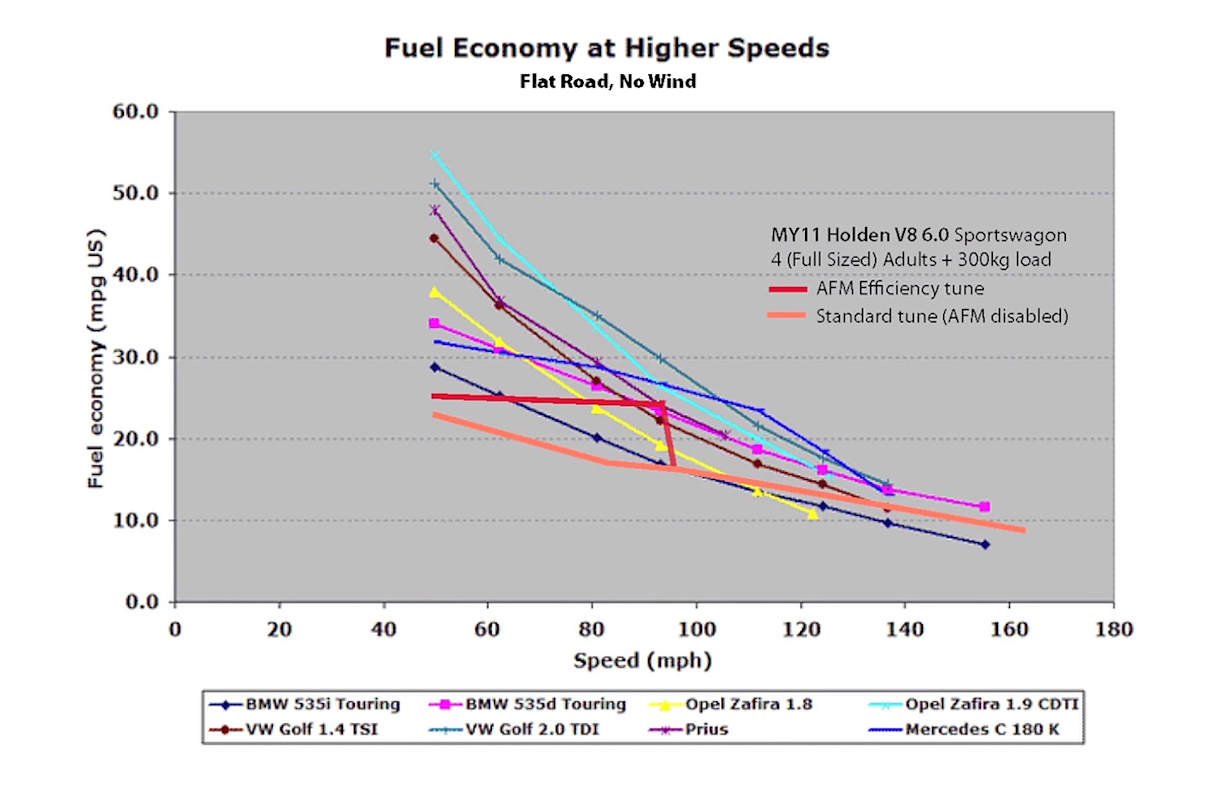If you’re like me, you’ve probably wondered if Holden’s ‘Active Fuel Management’ system actually works.
Because while cylinder deactivation technology sounds good in theory, there’s a difference between theoretical expectation and practical performance.
AFM, or ‘Active Fuel Management’, is Holden’s own brand of cylinder deactivation tech. What that pretty much means is that when the engine is under part-load, like when you're travelling down the highway, the engine shuts down half its cylinders – numbers one, four, six, and seven – in order to save a little bit of fuel.
So the theory goes like this: you get a great, big, fire-spitting 6.0-litre V8 when you want one, and a docile 3.0-litre V4 when you don’t. Nice!

But the thing is, if we automatically believed everything manufacturers told us, we’d probably think the Rukus was cool, the S-Class is for alpha males, and that the Nissan Navara is so ridiculously capable you wouldn’t be able to tell if you picked up a boulder.
However, as highlighted by this YouTube video, the owner of this MY11 Holden Commodore Sportswagon V8 does prove a point.

As you can see below, while traveling at... err, speeds in excess of 110km/h (which we don’t condone) the big Commo nibbles around 9L/100km. Not bad.

But once the AFM system deactivates, fuel consumption leaps all the way up to 13-14L/100km. That’s a pretty sizable discrepancy, particularly as those pro-AFM dividends will only save you more and more as time goes on.
So hey, I guess if you want a big, performance V8, Holden had it right years ago...
What do you think of cylinder deactivation technology? What’s your favourite piece of engine tech? Tell us in the comments.












